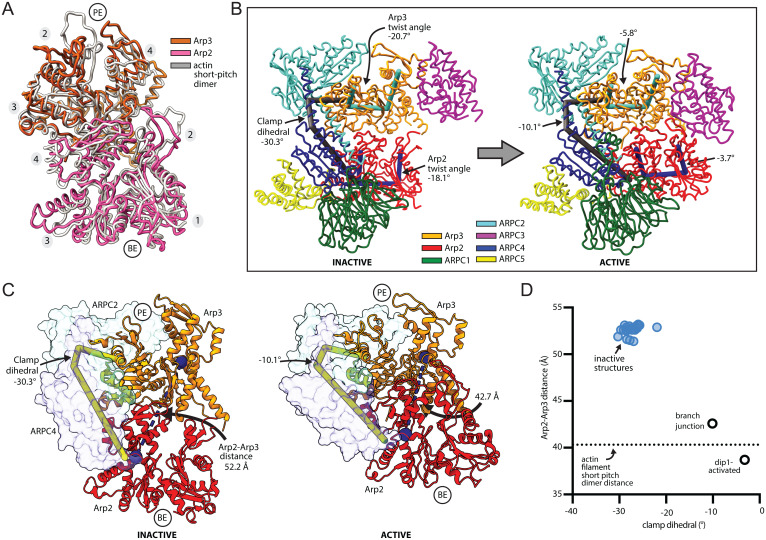Fig. 4.
Two major structural changes trigger branching nucleation. (A) Structural superposition of Cα atoms from Arp2 and Arp3 from the branch junction model with a filamentous actin dimer (PDB 6DJO, rmsd = 4.4 Å). (B) Comparison of the inactive (PDB 4JD2) Arp2/3 complex to activated Arp2/3 complex at the branch junction. The major conformational differences, clamp twisting and flattening of each Arp, can be measured via three different dihedral angles. (C) Comparison of the activated branch junction structure to inactive Arp2/3 complex (PDB 4JD2). The clamp (subunits ARPC2 and ARPC4, transparent surface) rotates to move Arp2 into the short pitch conformation, in which its center of mass (blue spheres) is closer to the Arp3 center of mass. Subdomains 3 and 4 were used for calculating the center of mass because subdomains 1 and 2 of Arp2 are disordered in most inactive structures. (D) Plot of the distance between the centers of mass of subdomains 3 and 4 of Arp2 and Arp3 versus the clamp dihedral angle. The equivalent distance between adjacent actin subunits along the short pitch helical axis in the mother filament is shown as a dotted line.

